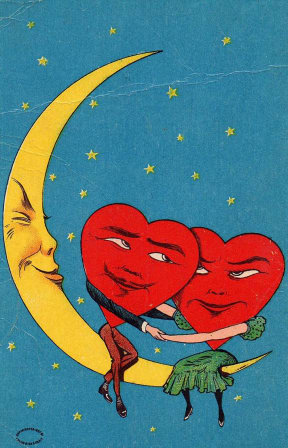Dr Arthur Aron has been a scientist of love for almost 50 years. He specialises in human closeness and the overlap between other and self – basically the way that when we’re close to someone we internalise things about them as part of ourselves.
You might have heard of Dr Aron's so-called 36 questions experiment, which went viral last year after Mandy Len Catron wrote about it in a New York Times essay.

Photo: CC BY-NC 2.0
The experiment was created to facilitate intimacy between people in a lab setting, to compare how close strangers got in 45 minutes when following these scripted questions compared to 45 minutes of unregulated small talk. The questions gradually increase in intimacy until two people are sharing some of the most sacred details of their lives.
Arthur Aron is a psychology professor at Stony Brook University. He works alongside his wife, Dr Elaine Aron, who is an expert on the highly sensitive person.
Interview highlights:
Dr Arthur Aron: [Romantic love] usually has two or three components. Probably the most central is an intense desire for union, connection, with another person. And if it’s an adult it’s someone with whom you might have a sexual relationship… And it usually has going along with it huge amounts of time spent thinking about the other person and this desire for connection.
We have a lot of research showing that when you’re close to someone you actually mix up the other person with yourself in various ways.
We wanted to study closeness and the problem is if you went and looked at the effect of closeness either on the brain or hormones or behaviour, how do you do it?
We looked at the survey research that had been done on how people spontaneously form friendships and tried to condense that into about 45 minutes. It involves three things – the most obvious is that when people get close in ordinary friendships typically the pattern is that they start self-disclosing, revealing personal things to each other. At first at a not too deep level.
If you reveal too much too fast you can put the person off, but if you reveal a little bit and the person reciprocates with a little bit and then gradually it becomes more and more intimate material, that tends to be associated with creation of friendship. So we said, OK, let’s see if we can do that more quickly.
There seems two big factors in falling in love – presuming the person is basically in the ball park – they’re the appropriate age and gender for you and the right culture – details of similarity don’t matter very much, [only] a little.
What matters more is one, the person being desirable – that is they have reasonably desirable personal characteristics and are reasonably good-looking. Desirability matters. And then the other huge factor is thinking they like you, particularly thinking they like only you.

